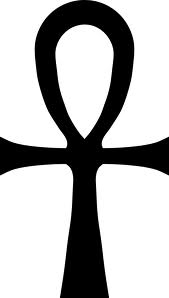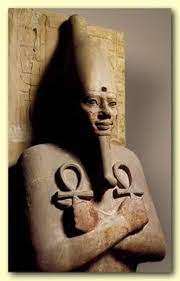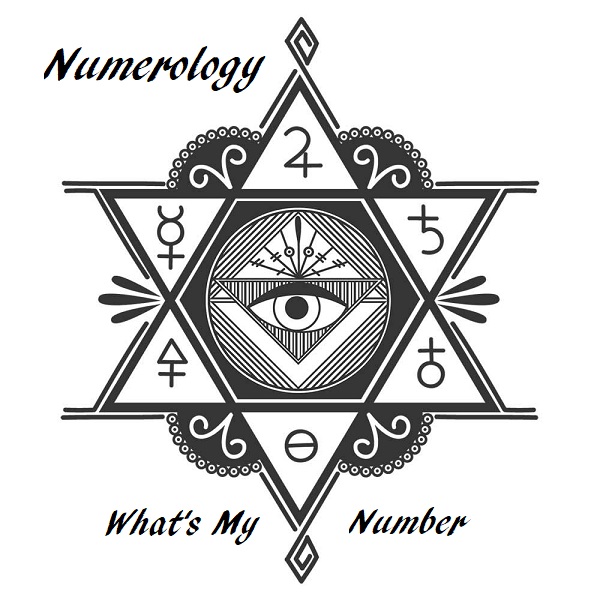The Ankh
A Symbol of Life and Immortality
Revised 13 Sep’2023 by Numerology Number

The Ankh is an ancient Egyptian hieroglyphic character that symbolizes the word “life.” It is also known as crux ansata or cross-with-a-handle. The Ankh represents both physical and eternal life and is considered the original cross, created by Africans in Ancient Egypt. The symbol is associated with material things such as water, air, and the sun, as well as with the gods who are often depicted carrying an Ankh. Egyptian gods carried the Ankh by the loop or held one in each hand crossed over their breast. The Ankh is a powerful symbol that has been used for centuries and continues to be recognized today.
The ankh is an ancient Egyptian symbol that has been used for thousands of years. It is often depicted as a cross with a loop at the top, and it is commonly associated with life and immortality. The ankh is one of the most recognizable symbols of ancient Egypt and has been found in many different forms of art and architecture throughout the centuries.
The exact meaning of the ankh is still a subject of debate among historians and scholars. Some believe that it represents the union of male and female, while others see it as a symbol of the sun or the Nile River. Despite these differing interpretations, the ankh remains an important symbol in Egyptian mythology and continues to be used in modern times as a symbol of life and spirituality. Whether it is worn as a piece of jewellery or used in religious ceremonies, the ankh is a powerful symbol that has stood the test of time.
Origins of The Ankh
The ankh, also known as the key of life or the key of the Nile, is an ancient Egyptian symbol that represents life and immortality. Its origins can be traced back to the Early Dynastic Period (c. 3150 – 2613 BCE) of ancient Egypt.
The exact origin of the ankh is unclear, but it is believed to have evolved from the hieroglyphic symbol for sandal strap, which was used to indicate life. Over time, the symbol evolved into the recognizable form of the ankh, with a loop at the top and a cross at the bottom.
The ankh was a popular symbol in ancient Egyptian art and was often depicted being held by gods and pharaohs. It was also used in funerary art and was believed to provide the deceased with eternal life in the afterlife.
The ankh was not only a symbol of life and immortality but also represented the concept of the union between male and female. The loop at the top of the ankh represented the female genitalia, while the cross at the bottom represented the male genitalia. This union was seen as essential for the continuation of life and the perpetuation of the human race.
Overall, the ankh remains an important symbol in modern times, and its origins continue to fascinate and intrigue people around the world.
Symbolic Meaning of The Ankh
Eternal Life
The Ankh is a symbol that represents eternal life. It is believed to have originated from ancient Egypt and has since been used in various cultures around the world. The loop at the top of the Ankh represents the sun rising over the horizon, while the vertical line represents the path of the sun. Together, they symbolize the cycle of life and death, and the eternal nature of the soul.
Protection
The Ankh is also believed to offer protection to its wearer. It was often worn by pharaohs and other important figures in ancient Egypt as a symbol of their divine protection. The Ankh was also used in various religious rituals to protect the soul of the deceased on their journey to the afterlife.
Fertility and Reproduction
In addition to representing eternal life and protection, the Ankh is also associated with fertility and reproduction. The loop at the top of the Ankh is often interpreted as a symbol of the female reproductive organs, while the vertical line represents the male phallus. Together, they symbolize the union of male and female energies, and the creation of new life.
Overall, the Ankh is a powerful symbol that has been used for thousands of years to represent various aspects of life and death. Whether worn as a protective talisman or used in religious rituals, the Ankh continues to hold great significance in many cultures around the world.
The Ankh in Ancient Egyptian Art
Depictions in Hieroglyphs
The ankh was a prominent symbol in ancient Egyptian hieroglyphs, representing the concept of life and immortality. It was often depicted being held by gods and goddesses, as well as pharaohs and other important figures. The symbol was also commonly used in inscriptions and other written works, serving as a reminder of the importance of life and the afterlife in Egyptian culture.
Use in Sculpture and Architecture
The ankh was also a popular motif in ancient Egyptian sculpture and architecture. It was often carved into stone and other materials, and used to adorn temples, tombs, and other important structures. In some cases, the symbol was even incorporated into the design of furniture and other household items.
One notable example of the use of the ankh in ancient Egyptian architecture is the Temple of Hatshepsut, which features numerous depictions of the symbol throughout its walls and columns. The temple was built during the 15th century BCE, and is considered one of the most impressive examples of ancient Egyptian architecture still standing today.
Overall, the ankh was a central symbol in ancient Egyptian art and culture, representing the importance of life and immortality to the people of that time. Its use in hieroglyphs, sculpture, and architecture served as a reminder of these concepts to all who encountered it.
The Ankh in Modern Culture
Adoption by New Age Movements
The ankh has been adopted by various new age movements as a symbol of spiritualism and mysticism. It is often used as a representation of eternal life and the divine feminine. Many people wear ankh jewellery as a talisman or amulet to protect them from negative energy and to promote positive energy.
The ankh is also used in meditation and spiritual practices. It is believed to help connect the physical and spiritual worlds, and to open the third eye chakra. Some people use ankh-shaped crystals or stones during meditation to enhance their spiritual experience.
Usage in Popular Media
The ankh has become a popular symbol in modern media, particularly in the fantasy genre. It is often used as a symbol of magical power or as a key to unlock hidden knowledge. In popular culture, the ankh has been featured in movies, television shows, video games, and books.
One notable example is the video game series “Assassin’s Creed,” where the ankh is used as a symbol of the Isu, an ancient civilization that created humanity and the world. In the television show “The Vampire Diaries,” the ankh is used as a symbol of immortality and is worn by the character Esther, who is a powerful witch.
Overall, the ankh has become a popular symbol in modern culture, representing eternal life, spiritualism, and mystical power. Its adoption by new age movements and usage in popular media has helped to keep the symbol relevant and meaningful in today’s society.
Conclusion to The Ankh
The ankh is an ancient Egyptian hieroglyphic symbol that represents life and the afterlife. It is one of the most

recognizable symbols of ancient Egypt and has been used for thousands of years in various forms of art and architecture.
The ankh’s meaning and significance have evolved over time, but it has always been associated with life, fertility, and regeneration. It was often depicted in the hands of gods and goddesses, and it was believed that it could grant eternal life to the deceased.
Despite its ancient origins, the ankh remains a popular symbol today, particularly in modern spirituality and new age movements. It is often used in jewellery, tattoos, and other forms of personal adornment.
Overall, the ankh is a fascinating symbol with a rich history and cultural significance. Its enduring popularity is a testament to its enduring appeal and timeless message of life and renewal.
